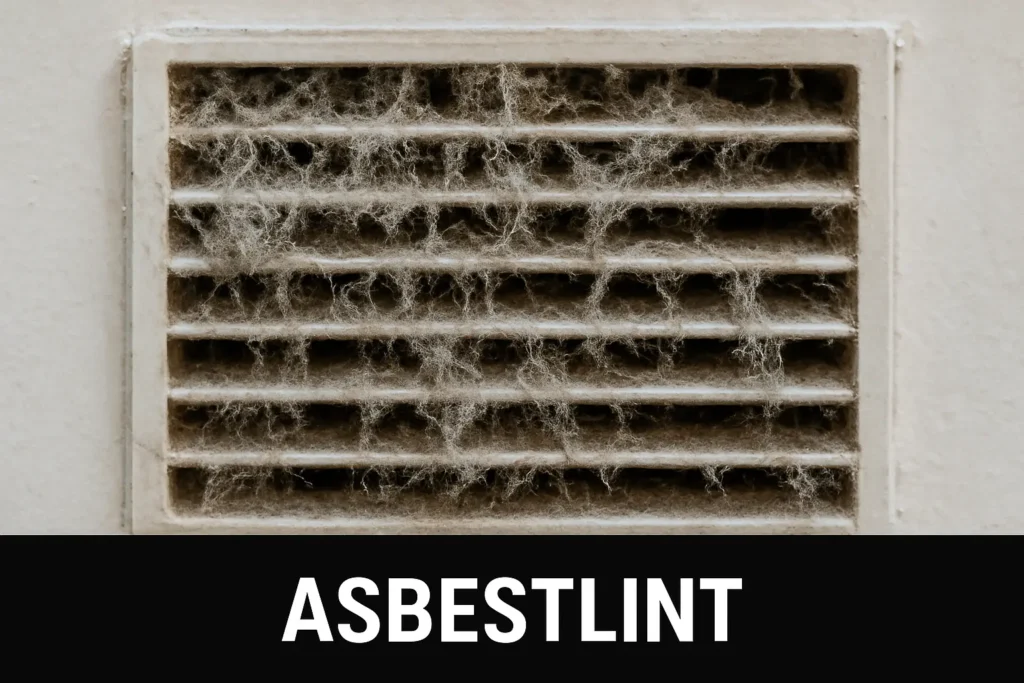As a homeowner, contractor, or curious reader, you may encounter the unusual term asbestlint and wonder whether it’s a real hazard or just a catchy phrase. This article explains what asbestlint means in practical terms, why it matters for health and property, and what clear, professional steps you can take to reduce risk during maintenance, renovation, or everyday cleaning.
What is asbestlint?
The simplest way to think about asbestlint is as a description of dust-like asbestos fibers mixed with normal household lint and dust. In older buildings, fragile insulation, flooring, pipe wrap, and certain ceiling materials can break down over time into fine, fibrous particles that behave like lint—light, mobile, and easy to inhale. When these fibers become part of settled dust or accumulate in vents and fabric filters, they create a contamination problem that looks ordinary but carries a hidden hazard.
How asbestlint forms
Asbestlint typically forms through age and mechanical disturbance. Materials that once contained asbestos can slowly deteriorate, releasing microscopic fibers into the air. Activities such as drilling, sanding, cutting, or even heavy vibrations from construction can fragment these materials into lint-like particles. Once airborne, those fibers settle on surfaces, hide in textile fibers, or circulate through HVAC systems, creating persistent contamination unless properly addressed.
Health risks from asbestlint exposure
The presence of microscopic fibers in household dust is not merely a nuisance—these particles can reach deep into the lungs and remain there for years. Repeated or heavy exposure to fibrous dust is associated with serious respiratory conditions, long-term scarring of lung tissue, and an increased risk of certain cancers. Risk grows with the concentration and duration of exposure, and individuals with preexisting respiratory conditions or long-term occupational exposure are particularly vulnerable. For these reasons, taking contamination seriously and using certified professionals for testing or removal is important.
Common locations and sources
Asbestos-containing materials were widely used in construction for decades, so potential sources of fibrous dust are many. Typical trouble spots include old pipe insulation, vinyl floor tiles and adhesives, textured plaster and ceiling tiles, older roofing materials, and some heat-resistant fabrics. Fibers can also accumulate in attics, crawlspaces, dryer vents, and HVAC systems, carried there by normal household airflow and foot traffic. Recognizing likely source areas helps prioritize testing and containment.
Detection and safe removal of asbestlint
Professional testing is the only reliable way to know whether household dust contains hazardous fibers. Certified laboratories use specialized microscopy methods to identify and quantify microscopic particles. If testing confirms contamination, certified remediation specialists follow strict protocols: isolating the area, using wet methods to suppress dust, employing negative-pressure containment, and removing materials for proper disposal. Attempting to sweep, brush, or vacuum suspect dust with ordinary equipment risks re-aerosolizing fibers and spreading contamination. When in doubt, stop work and call a qualified inspector.
Preventive measures and maintenance
Prevention focuses on minimizing disturbance and routine monitoring. Keep older attics, basements, and mechanical rooms sealed and limit access to potential source areas. Replace or repair aging materials before they degrade; when repairs are needed, hire licensed contractors who follow containment and disposal rules. Regularly change HVAC filters with high-efficiency units and have ductwork inspected if you suspect contamination. Clean gently: use damp cloths for surface cleaning and HEPA-filtered vacuums operated by trained personnel rather than household vacuums that can push fibers back into the air.
Practical checklist for homeowners and renovators
- Identify areas of the building that date from the era when asbestos was commonly used.
- Avoid disturbing suspect materials; don’t sand, drill, or cut without testing first.
- If dust looks excessive or fibrous, arrange professional testing before any renovation.
- Hire licensed abatement contractors for removal, and insist on written procedures and waste manifests.
- Follow up with air clearance testing to confirm the area is safe to reoccupy.
Conclusion
Asbestlint is a useful way to describe the tiny, lint-like particles that can form when asbestos-containing materials break down. Because these fibers are easily inhaled and can cause serious long-term health effects, a cautious, professional approach is essential: identify potential sources, test before you disturb, and use certified specialists for removal. With careful inspection, containment, and maintenance, homeowners and tradespeople can reduce risk and keep living and working spaces safe.
FAQs
What should I do if I find dusty, fibrous material in my home?
Stop disturbing the area and limit access. Arrange for professional testing to confirm whether the dust contains hazardous fibers.
Can I clean asbestlint myself with a vacuum?
No. Ordinary vacuums can re-aerosolize fibers. Use wet cleaning methods only after a professional has assessed the situation, or call licensed cleanup services.
How long does asbestos contamination remain a problem?
Fibers can persist in dust and on surfaces for years. Proper removal and air clearance testing are necessary to ensure a space is safe again.
Are all old houses at risk for this problem?
Not every old house will have hazardous fibrous dust, but buildings constructed before the late 1970s are more likely to contain materials that can produce such dust if disturbed.
How do professionals confirm an area is safe after removal?
Qualified abatement teams perform post-cleaning air clearancetesting using specialized methods; passing those tests is the standard for reoccupying the space.

